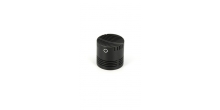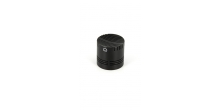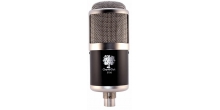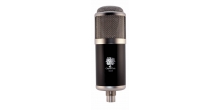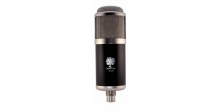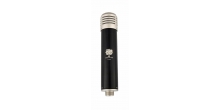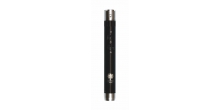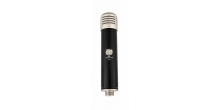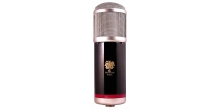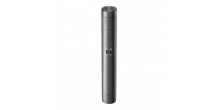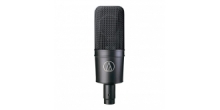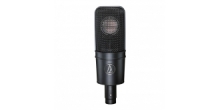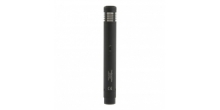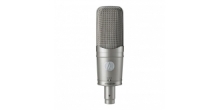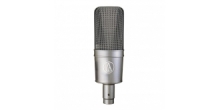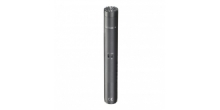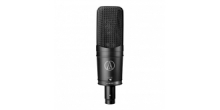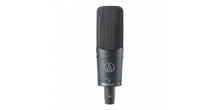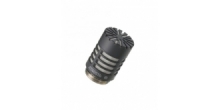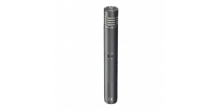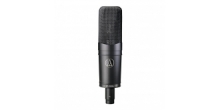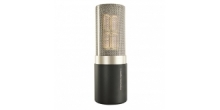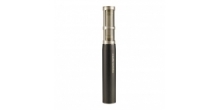 Agrandir l'image
Agrandir l'image
| Polar pattern | Cardioid |
| Acoustic operating principle | Pressure gradient transducer |
| Frequency range | 40...20000 Hz |
| Sensitivity at 1 kHz | 21 mV/Pa |
| Output impedance | 100 Ohms |
| Noise level | |
| CCIR 468 - 4 | 13 dB |
| DIN EN 60651 | 7 dB - A |
| Signal-to-noise ratio (re 1 Pa at 1 kHz) | |
| CCIR - weighted | 81 dB |
| A - weighted | 87 dB |
| Max. SPL for K < 0,5% | 142 dB |
| Max. output level | |
| RL = 1 k Ohms | 17 dBu |
| RL = 10 k Ohms | 18 dBu |
| Dynamic range of electronics | 135 dB |
| Current consumption ( P 48, DIN 45596, IEC 268 - 15 ) | 3,6 mA |
| Output connector | 3-pin XLR connector, goldplated contacs |
| Weight without MH 93.1 | 355 g |
| Dimensions ( L x Ø ) | 145 mm x 66 mm |
| Finish | satin matt |
MICRC62FE4
Nouveau
Microtech - M1030

The studio condenser microphone M 1030 combines modern large diaphragm capsule technology with the latest in semiconductor circuit topology. The size of the microphone housing is optimized with regard to the expectations of a large diaphragm microphone for studio applications.
The microphone is specifically designed to meet the needs of professional and semi-professional users whodemand the highest performance. The microphones are ideally suited for universal miking applications in broadcast and sound studios. Applications include vocalists, announcers, dialog pickup and as spot microphones forrecording guitars, keyboard, percussion, wind and string instruments.
The pick-up pattern is perpendicular to the direction of the microphone axis (side addressed). The model number and pick-up pattern symbol mark the front of the microphone. The green lightemittingdiode (LED) inside the protection grid operates as optical ready indicator.
The condenser capsule exhibits a smooth frequency response with a slight presence boost in the 8 to 14 kHz range. The polar response exhibits an exceptionally high degree of rejection for sounds impinging from the rear (cardioid) or sides (super-cardioid) of the microphone. The electronic impedance converter uses a newly perfected circuit topology. This design reduces the noise floor to an extremely low level while also raising the maximum output capability. As a result, this microphone have a clean, distortion free sound over an extremely wide dynamic range. RFI susceptibility is very low. The microphone capsule and electronics are elastically suspended inside the compact metalhousing. This reduces the sensitivity to mechanical impact and structure born noise.
The microphone stand holder MH 93.1 can be exchanged for an elastic suspension EA 92 with the adaptor A 93 to further attenuate noise in extreme situations. The M 1030 connect to the microphone cable with a standard 3-pin XLR plug. Powering must be provided by an external 48 V phantom supply according to DIN 45596 and IEC 268-15. The microphone is finished in satin matt.
Features And Specs
| Polar pattern | Cardioid |
| Acoustic operating principle | Pressure gradient transducer |
| Frequency range | 40...20000 Hz |
| Sensitivity at 1 kHz | 21 mV/Pa |
| Output impedance | 100 Ohms |
| Noise level | |
| CCIR 468 - 4 | 13 dB |
| DIN EN 60651 | 7 dB - A |
| Signal-to-noise ratio (re 1 Pa at 1 kHz) | |
| CCIR - weighted | 81 dB |
| A - weighted | 87 dB |
| Max. SPL for K < 0,5% | 142 dB |
| Max. output level | |
| RL = 1 k Ohms | 17 dBu |
| RL = 10 k Ohms | 18 dBu |
| Dynamic range of electronics | 135 dB |
| Current consumption ( P 48, DIN 45596, IEC 268 - 15 ) | 3,6 mA |
| Output connector | 3-pin XLR connector, goldplated contacs |
| Weight without MH 93.1 | 355 g |
| Dimensions ( L x Ø ) | 145 mm x 66 mm |
| Finish | satin matt |




